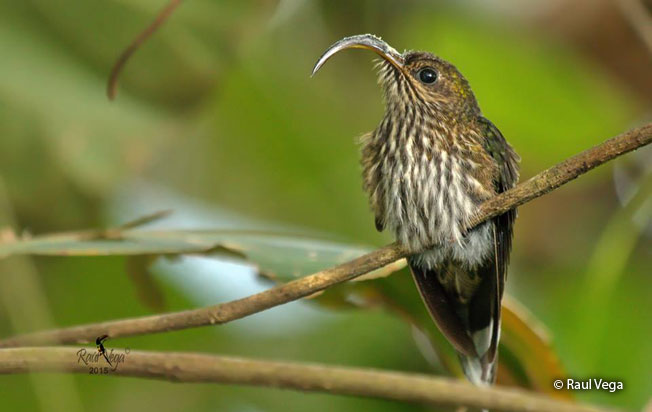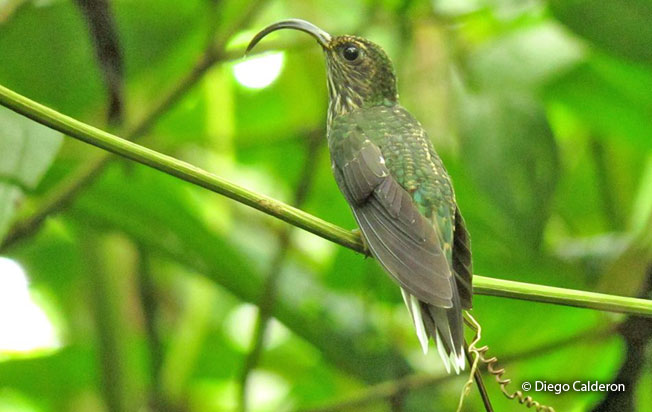Order: Apodiformes | Family: Trochilidae | IUCN Status: Least Concern

Age: Adult | Sex: Unknown | Loc. Costa Rica

Age: Adult | Sex: Unknown | Loc. Eastern Andes, Colombia

Age: Adult | Sex: Unknown | Loc. Eastern Ecuador

Age: Adult | Sex: Unknown | Loc. Eastern Andes, Colombia
Identification & Behavior: ~13 cm (5.1 in). The White-tipped Sicklebill is dark green above and grayish with dusky-gray stripes below. The tail is dusky with long white tips. The bill has the shape of a sickle with a yellow lower mandible. It forages in the understory of interior forest and forest edges where it is associated with stands of Heliconia Spp. It is similar to the Buff-tailed Sicklebill but is distinguished by a dusky tail with white spots and the absence of blue-green patches on the sides of the neck.
Status: The White-tipped Sicklebill is uncommon to rare on the east slope of the Andes at elevations ranging between 750 – 2000 m. It also occurs in Co and Ec.
Name in Spanish: Pico-de-Hoz de Puntas Blancas.
Sub-species: White-tipped Sicklebill (Eutoxeres aquila aquila), Bourcier 1847.
Meaning of Name: Eutoxeres: Gr. Eu=fine good, toxeres= archer, furnished with the bow. aquila: L. an eagle: eagle-like bill.
More about co-evolution with flowers in hummingbirds.
Distribution Map
 Voice
Voice
 Voice
VoiceReferences:
-
- Species range based on: Schulenberg, T. S., D. F. Stotz, and L. Rico. 2006. Distribution maps of the birds of Peru, version 1.0. Environment, Culture & Conservation (ECCo). The Field Museum. http://fm2.fieldmuseum.org/uw_test/birdsofperu on 08/01/2015.